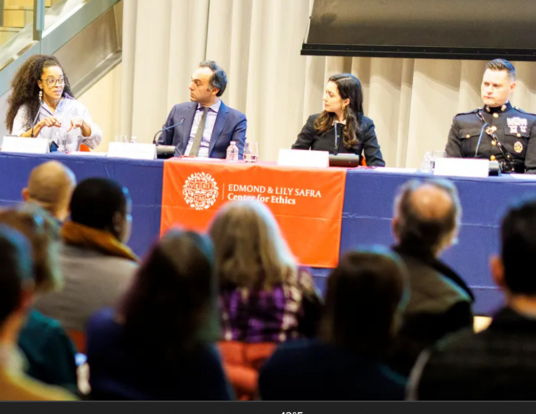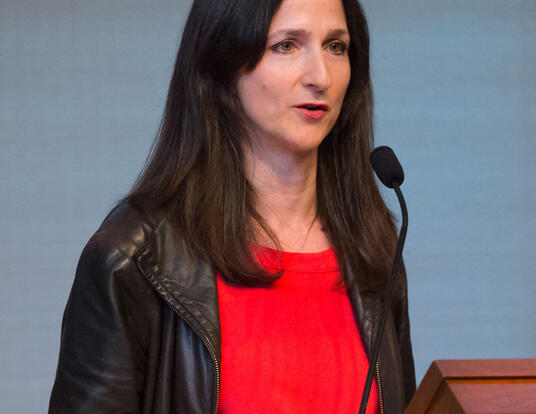The Shape of Memory
Harvard Griffin GSAS Voices: Brandon Woods, PhD ’23
Brandon Woods is a postdoctoral fellow in the Department of Neurobiology at Harvard Medical School. He talks about his research on neuroplasticity, his passion for the study of microorganisms, and “becoming” a PhD at Harvard Griffin GSAS.
Gene Expression in Time and Space
I study a phenomenon called neuroplasticity. You can think of it as a mechanism of information storage inside the nervous system, the way that information is deposited on a physical level. Where does this information come from? It comes from your environment. Your body takes information from the environment and translates it into a bioelectric code called neural activity, and this is encoded in the nervous system so you can remember that information.
For such information to be stored in the nervous system, the neurons literally have to change shape. The neural activity that represents this information dynamically regulates gene expression, which reconfigures the shape of neurons and allows information to be deposited. Think of registrars at a university who record information in the form of paper. Now the nervous system and all its cells have been primed as registrars. Each cell in the nervous system has that ability to modulate its shape for information storage.
I study on a cellular and molecular level how gene expression is coordinated and adaptively regulated to allow neurons to change their shape when storing information. The challenge is that neurons are communicative cells that transmit information throughout the body over distances that can range from millimeters to meters in length! For this reason, neurons are very long. That poses distinct challenges for the information storage process. That process is initiated in the cell’s nucleus, which could be in your spinal cord. But the “business end” of the neuron could be in your toe, meters away. It’s like having your command center in Boston, but the action center is in San Diego.
I study a class of molecules called microRNAs. They are involved in allowing genes to be regulated locally, outside the nucleus. Local regulation of gene expression allows specific genes to be turned on or off in distal regions of the neuron, without relying solely on signals from the nucleus. This is important because if the synapses in those neurons had to rely on regulation from the nucleus, the signals would have to travel over a very long space, which would require a long time—too long for synapses to mount effective responses to a fast-changing local environment.
MicroRNAs are unique agents that allow gene expression to take place within the dimensions of neuronal time and space, and they are essential for the change in shape when cells begin storing and recording information. I discovered a unique microRNA that is required for stabilizing new cellular structures during the information storage process. This lies at the very core of long-term memory formation.
Microbial Motivations
I was a microbiology major at the University of California, Davis, where I developed a passion for the plasticity of microorganisms. I was fascinated by the way bacteria and microbes essentially adapt their metabolism based on the availability of nutrients in their environments. It happens because of a change in gene expression. My study of microorganisms led me to explore adaptive gene regulation in neurons as a PhD student here.
I’m currently in a postdoctoral program under the purview of Professor Michael Greenberg in the Department of Neurobiology at Harvard Medical School. I’m taking my inquiry into neurons into the fields of aging and genome protection. A lot of research has been done on other mammalian systems, especially mice, but I’m interested in looking at how aging and genome protection takes place in the human neuron.
The Power of Perspective
Obtaining a PhD is not necessarily about what you learn, but about what you become. Learning and becoming are related and interdependent, but when you become something, it’s about how you embody what you have learned on an intellectual, emotional, and physical level. The PhD forces you to engage your mind, your body, and your spirit in a way that doesn’t happen with an exam or writing papers. You wonder how you’re going to deliver something novel to an audience of experts. Your ability to deal with that kind of pressure is where the “becoming” takes place. It’s where you discover new powers you never knew you had.
For example, say you’re sitting in a room of experts, but your particular disposition, your upbringing, and your perspective allow you to see something that even the experts might have missed. That fundamentally changes the way you see yourself. Through that experience, you become far bigger than the factual information you learned. All of your experiences, your successes, and failures color that information with a unique perspective that only you can offer. You may fail, you may fall, but you pick yourself back up again. Through this cycle, you not only become an expert yourself but one with a unique vantage point.
Get the Latest Updates
Join Our Newsletter
Subscribe to Colloquy Podcast
Simplecast





